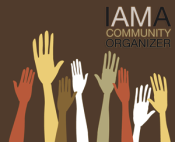“There has to be some form of serious pathological arousal or trigger taking place in that individual. So yes, lynching was acting out a form of ECA by those who committed those atrocious and shocking acts.” Field Negro in The AfroSpear
TRIGGERS IN CLASSIC PSYCHODYNAMIC THEORY
In classic Freudian psychiatry, therapists sought the single “trigger” - the one time potent psychic event - that forever caused psychic disturbances in patients, such as inadvertently seeing parents violently love-making. (My example.) More recently, psychiatry and psychology have come to realize that a series of events over a long period of time can serve as kindling for a fire that can burn brightly or dimly depending upon stress and circumstances.
WHITE SUPREMACIST IDEOLOGY IN THE PROLONGED "KINDLING" MODEL, IN THE CONTEXT OF UNEQUAL POWER BETWEEN COLOR GROUPS
So, rather than there being any immediate trigger that outrages the lyncher, there may have been a ongoing ideational and emotional preparation, reinforced by behavior over time, that prepares the Extreme Color-Aroused Offender for an act of lynching.
For example, during slavery, the whipping of slaves and other brutal acts, and slavery itself, would have been traumatic to very young white children. But because it was so common, they would have quickly adjusted to their surrounding, adopting the dominant ideology and ideation that such acts of brutality were normal and natural. There emotions would have adjusted to their ideological expectation, even to the extent of showing little emotion upon, or reveling in the lynching, of a Black man.
The belief that it was necessary to “keeps the ‘N’s’ in their place,” in spite of the obvious reasons that Blacks would have had for resisting, would have would have caused a constant fear in whites as well as a perpetual need to engage in acts that kept Blacks subservient. So, rather than needing a dramatic “trigger” to arouse an act such as a lynching, whites may well have been looking for a trigger that would serve to would serve to rationalize and serve as a pretext for a dramatic act of brutal “lesson teaching” that would assert and reassert control over Blacks. In such an atmosphere any event or non event at all might suffice as the pretext for a white community moment of reassertion of control. And therefore, no dramatic “trigger” in the normal sense would have been necessary.
Emerge Magazine explains that the mere allegation that 14-year-old Emmett Till had whistled at a white woman in Greenwood, Mississippi, was enough to get the youth “abducted, beaten, shot in the head and tossed into the Tallahatchie River near Greenwood, Miss., “mutilated” for allegedly whistling at a White woman.” Clearly, little motivation was needed to set fire to the dry kindling that was the segregated south.
THE IDEATION OF WHITES DURING SLAVERY
As Emerge explains, ideationally whites idolized white women and and desperately feared the normal interpersonal contact that might be expected to occur between people of opposite sexes living and interacting with each other constantly. Although white men regularly engaged in sex with Black women who were in no position to refuse, they nonetheless were extremely afraid and therefore extremely jealous of any possible liasons between white women and Black men. Indeed, white ideation and ideology had it that their right to enslave Blacks derived from their "superior white genes."
THE EMOTIONS OF WHITES DURING SLAVERY
Sex between Black men and white women offered no benefit for white men and, moreover threatened the very ideological underpinnings of white subjugation of and exploitation of free black labor (slavery) and cheap Black labor (share cropping).
The very system they created also created extreme anger, jealousy, fear, pervasive suspicion, hyper-vigilance and prolonged dread of inevitable change or conflict in whites.
THE NEUROBIOLOGY OF "KINDLING"
BESSEL A. VAN DER KOLK and JOSE SAPORTA of Harvard Medical School explain (in very scientific language) how living in such an environment of constant tension and sudden outbursts of catastrophic violence could subtly but measurably change human minds at a neuronal level:
“A third trauma related function of the limbic system involves the issue of kindling. Intermittent stimulation of the limbic system with an electrical current that was initially too small to produce overt behavioral effects can eventually sensitize limbic neuronal circuits and lower neuronal firing thresholds: repeated stimulation of the amygdala causes long-term alterations in neuronal excitability (for a review, see van der Kolk, 1987). It is possible that similar kindling phenomena occur when people are repeatedly traumatized, or when one traumatic event is followed by intrusive reexperiences.
Thus, trauma may lead to lasting neurobiological and behavioral (characterological) changes mediated by alterations in the temporal lobe. Kindling may also account for the frequent finding of soft neurological signs in trauma victims, especially in child victims of physical or sexual abuse (van der Kolk, 1987). Open studies claim that carbamezapine is an effective treatment for the intrusive symptoms of PTSD (Lipper et al., 1986) which lends some support for a role of the limbic system in codifying post traumatic reactions. BESSEL A. VAN DER KOLK and JOSE SAPORTA
“Debilitating poverty and complicated family relationships that result in little parenting, alienation, and anger serve as kindling for a fire that bums within, waiting for the crucial spark. Such fundamental breakdowns of society that contribute to violence permeate schools and must be dealt with daily by educational personnel. As violence has escalated in the larger society, it has spilled over into the schools as well.” USA Today
SUMMARY
So, in the context of the Jim Crow South, where Extreme Color-Aroused Violent Behavior was a tool that perpetuated the social control of segregationists, it would not have required a dramatic “trigger” in the normal sense for a kindled situation primed for violence to explode in episodes of outrageous color-antagonistic brutality.



No comments:
Post a Comment